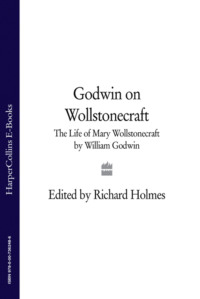
Полная версия
Falling Upwards
He also explained that a two-thousand-foot guide rope, fitted with canvas sea drags and copper floats, would be enough to stabilise an eighty-thousand-cubic-foot balloon and keep it airborne, without expending additional ballast, for ‘a period of three months’. He said he was only awaiting a generous sponsor to undertake the trans-Atlantic flight immediately.40 In the end, the astute Green could find no financial backer, refused to depart without one, and the Atlantic attempt was never made.
But it was made in fiction. Green’s proposals inspired a further brilliant invention by Poe, published in the New York Sun in 1844. This time it was a news story hoax. ‘The Atlantic Balloon’ coolly presents an extraordinarily detailed and convincing account of Green and Monck Mason crossing the Atlantic from England in seventy-three hours. Much of the story is drawn from the well-publicised flight of the Royal Nassau. As the third member of the balloon crew, instead of Robert Hollond MP, Poe mischievously added his rival, the popular British thriller writer Harrison Ainsworth.
Poe’s story broke on Saturday, 13 April 1844, when the New York Sun announced that it would be issuing an ‘Extra’ containing a detailed account of a transatlantic crossing by a balloon, the ‘flying machine’ Victoria. There was also a postscript in the morning edition of the Sun, with an appropriate accumulation of exclamation marks: ‘By Express. Astounding intelligence by private express from Charleston via Norfolk! – The Atlantic Ocean crossed in three days!! – Arrival at Sullivan’s Island of a steering balloon invented by Mr Monck Mason!!!’
The Extra created an immediate sensation. According to Poe’s own account, a large crowd gathered in the square surrounding the New York Sun to wait for it, and when it appeared at two in the afternoon, it sold out immediately. The account consists of an introductory section and a journal kept by Monck Mason, to which Mr Ainsworth added a daily postscript. The introduction details the invention of the balloon by Mason (rather than Green), who adapted an Archimedean screw for the purpose of propelling a dirigible balloon through the air, inflated with more than forty thousand cubic feet of coal gas.
In contrast to the newspaper announcement, Poe’s own ‘reportage’ remains cool and apparently factual. The plain and straightforward narrative works on several levels. First, it genuinely explores the technical, scientific challenge of crossing the Atlantic, which was already beginning to obsess American aeronauts like John Wise. Next, it quietly touches on a vein of social satire, a mockery of scientific presumption and hubris which would become characteristic of the later science fiction genre. Finally, as with so many of Poe’s stories, it is a psychological study, an exploration of collective delusion, a group ‘suspension of disbelief’. Here Coleridge’s famous term takes on a new, strangely literal meaning.41 The desire to be dazzled by scientific wonders may be associated with a conscious willingness to be bamboozled or hoaxed.
Needless to say, it is also a brilliant exploitation of the growing newspaper tradition of the ‘scoop’ – and the fake scoop. American editors were shrewdly realising that their readers did not mind occasionally being taken for a ride, especially such an airborne one. This fruitful connection between balloons and newspapers was ready to expand.
4
Angel’s Eye
1
Throughout the 1840s and 1850s, dramatic ballooning stories gained increasing notice in the popular press, both in Britain and America. With the arrival of new illustrated journals, such as the Illustrated London News, founded in 1847, it was soon clear that they also offered superb opportunities for picture stories. The sheer size and glamour of a balloon, especially when contrasted with human crowds and cityscapes, were natural material for full-page and even double-page balloon ‘spreads’.
Few pieces of mid-Victorian aeronautical journalism could match Henry Mayhew’s long and rapturous account, ‘A Balloon Flight over London’, which appeared in the Illustrated London News for 18 September 1852.

Much of Mayhew’s previous writing life had prepared him for this extraordinary essay. He was one of the greatest journalists of the age, whose interests spanned everything from the fine arts to social reform. He also wrote poetry, plays, operas and would go on to produce hugely successful accounts of the early lives of two scientists: Young Humphry Davy (1855) and Young Benjamin Franklin (1861). His most famous work, London Labour and the London Poor, had been published in instalments throughout 1851, deliberately timed to coincide with the Great Exhibition, as a sobering correction to its Victorian triumphalism.
After spending much of his twenties knocking about Paris, freelancing alongside his friends William Thackeray and Douglas Jerrold, Mayhew returned to London full of ideas for a new kind of streetwise journalism. He was much taken with the irreverent and satirical style of the French magazine Le Charivari, to which the pioneering French aerial photographer Félix Nadar and many others contributed. In 1841 he helped the journalist Mark Lemon launch a quite new kind of humorous British periodical. It became Punch, with its mixture of witty essays and clever but good-natured satirical cartoons. It had an immediate success, but Mayhew and Lemon soon parted company, though remaining on excellent terms. Lemon continued at Punch, becoming a comfortable fixture in London literary clubland, and eventually one of Dickens’s most trusted editors. Meanwhile Mayhew struck out on his own, gradually developing a new kind of investigative journalism. He went far beyond the gentle, sardonic scope of Punch, contributing edgy, groundbreaking pieces to the Morning Chronicle. His special subject was London, and the underside of city life. Mayhew’s London was the city that few middle-class readers ever glimpsed: London from beneath.
For the next decade Mayhew produced hundreds of vivid, detailed reports of life in the backstreets and the rookeries, and especially on the marginal trades and skills that sustained the poorest men and women – and not least the children – of the capital. Among his celebrated and scandalous subjects were street vendors, costermongers, milkmaids, ratcatchers, mudlarks, crossing sweepers, fire eaters, prostitutes, pickpockets and dustmen. Each of his accounts was written with the clipped shape and high polish of a short story. They were buttressed by statistics, glinting with minute visual details, and brought to life with inimitable passages of dialogue.
Often these develop into simple but disturbing sequences of question and answer. ‘I make all kinds of eyes,’ the eye-manufacturer says, ‘both dolls’ eyes and human eyes; birds’ eyes are mostly manufactured in Birmingham, and as you say, sir, bulls’ eyes at the confectioner’s … A great many eyes go abroad with the dolls … The annual increase in dolls goes on at an alarming rate. As you say, sir, the yearly rate of mortality must be very high, to be sure, but still that’s nothing to the rate in which they are brought into the world … I also make human eyes. Here are two cases, in the one I have black and hazel, in the other blue and grey. Here you see are the ladies’ eyes … There’s more sparkle and brilliance about them than the gentlemen’s … There is a lady customer of mine who has been married three years to her husband, and I believe he doesn’t know she has a false eye to this day.’1 Such material, with its mixture of the mundane and the gothic, its small revelations of human eccentricity and affection, would clearly influence the later and darker novels of Dickens.
When he had amassed about half a million words of material, Mayhew began to edit and reorganise the pieces into the form of his grim masterwork London Labour and the London Poor. Once the work was completed, he cast around for a suitable way to celebrate. It struck him that an airy overview of the great city, in whose backstreets and dark corners he had spent so many years almost buried, would be suitable. So he accepted an invitation to take a flight in one of Charles Green’s balloons.
Officially this was to be one of Green’s frequently-advertised ‘Last Ascents’ from Vauxhall Gardens. For Mayhew, the flight was also to be, in a sense, the culmination and farewell to much of his previous journalism. But it was also a celebration and a release from it. Having seen London from the darkest and most labyrinthine street level, he now wished to sail into the clear air above it. He wanted to see his huge and ‘monstrous’ city at last in the grand perspective, or – as he put it with poignant irony – from ‘an angel’s view’. What’s more, he would write about it for the leading current-affairs weekly in Britain, the Illustrated London News.
In case the ‘angel’ approach seemed rather presumptuous, he began by explaining that he was naturally ‘a coward – constitutionally and habitually timid’. As it did for most of his readers, the idea of flying in a balloon frankly appalled him: ‘I do not hesitate to confess it’. The best he could say was that he was motivated by ‘idle curiosity, as the world calls it’. Having made this apparently modest disclaimer, Mayhew immediately admitted to the most heroic previous adventures:

I had seen the great metropolis under almost every aspect. I had dived into holes and corners hidden from the honest and well-to-do portion of the Cockney community. I had visited Jacob’s Island (the plague-spot) in the height of the cholera … I had sought out the haunts of beggars and thieves … I had seen the world of London below the surface, as it were, and I had a craving to contemplate it from far above it.
Even if balloon flight turned out be more terrible than anything he had previously experienced, he was determined to try it. What he hoped to see from Mr Green’s balloon was a new vision of the city. Supposing it would be something both familiar yet apocalyptic, Mayhew prepared himself to behold
that vast bricken mass of churches and hospitals, banks and prisons, palaces and workhouses, docks and refuges for the destitute, parks and squares, and courts and alleys, which make up London – all blent into one immense black spot – to look down upon the whole as the birds of the air look down upon it, and see it dwindled into a mere rubbish heap, to contemplate from afar that strange conglomeration of vice, avarice, and low cunning, of noble aspirations and humble heroism, and to grasp it in the eye, in all its incongruous integrity, at one single glance – to take, as it were, an angel’s view of that huge town where, perhaps, there is more virtue and more iniquity, more wealth and more want, brought together into one dense focus than in any other part of the earth. 2
One of Mayhew’s most powerful images was of London miniaturised and made safe, like some huge child’s toy. He, the weary and hardbitten observer of the streets, was somehow lifted clear and transformed by his airborne vantage point. The balloon conferred on him a kind of innocence, a kind of grace:
To hear the hubbub of the restless sea of life and emotion below, and hear it, like the ocean in a shell, whispering of the incessant strugglings and chafings of the distant tide – to swing in the air high above all the petty jealousies and heart-burnings, small ambitions and vain parade of ‘polite’ society [– was to] feel, for once, tranquil as a babe in a cot.
All this gave him a strange sensation, something close to a religious experience, a celestial transfiguration. It was as if, he wrote,
you are hardly of the earth, earthy, as Jacob-like, you mount the aerial ladder, and half lose sight of the ‘great commercial world’ beneath, where men are regarded as mere counters to play with, and where to do your neighbour as your neighbour would do you constitutes the first principle in the religion of trade – to feel yourself floating through the endless realms of space, and drinking in the pure thin air of the skies, as you go sailing along almost among the stars, free as ‘the lark at heaven’s gate’, and enjoying, for a brief half hour, at least, a foretaste of that Elysian destiny which is the ultimate hope of all.
Mayhew was a master of tone and phrase. These last sentences start carefully, with an evangelical earnestness, the language of Charles Kingsley and moral uplift, but slowly elide into something more sentimental and populist. Sailing among the stars, singing ‘at heaven’s gate’, dreaming of the Elysian fields, was really a subtle reversion to the imagery of popular Victorian songs and street ballads.
Mayhew was so pleased with this piece that he included an edited version of it in his later book The Criminal Prisons of London (1862). His view of London evidently influenced Gustave Doré, as well as Dickens’s novels Bleak House and Hard Times.
2
Charles Dickens was strangely intrigued by balloons. He witnessed many launches in Vauxhall Gardens, and wrote about them several times. He knew Charles Green, and observed his aeronautical calm, his skill with a crowd, and his waving of his white top hat, with a professional admiration. Yet his reactions were far more complicated than Mayhew’s.
It is surprising that the great master of human exotica, and the writer who enshrined the English stagecoach in imaginative literature (notably in The Pickwick Papers), never actually ventured to set foot in a balloon basket himself. There is no record of Dickens ever leaving terra firma, except in his dreams. As a result, unlike Mayhew, all Dickens’s balloon observations are made from the ground. Of course he may simply have had a quite reasonable fear of heights; or there may have been more mysterious influences at work. He may even have regarded balloon flying as immoral – as a sort of suicidal surrender of self-command.
Dickens gives a surprisingly sarcastic account of one of Green’s early balloon launches in a light-hearted piece of reportage entitled ‘Vauxhall Gardens by Day’, later collected in Sketches by Boz (1836). He seems particularly exercised by the gullibility of the crowd, its surrender to the meaningless novelty overhead.
The gardens disgorged their multitudes, boys ran up and down screaming ‘bal-loon;’ and in all the crowded thoroughfares people rushed out of their shops into the middle of the road, and having stared up in the air at two little black objects till they almost dislocated their necks, walked slowly in again, perfectly satisfied.
There is a sense here that ballooning is an art of illusion, almost a conjuring trick played upon a credulous audience. Yet it is also a symbol of novelty and popular excitement, and Dickens’s illustrator Phiz used it to witty effect in his cover drawing for the collected Boz essays. This ambiguous impression is sharpened in Dickens’s comments on the subsequent newspaper coverage, making a series of sly digs at an interview that Green gave to over-enthusiastic reporters.

The next day there was a grand account of the ascent in the morning papers, and the public were informed how it was the finest day but four in Mr. Green’s remembrance; how they retained sight of the earth till they lost it behind the clouds; and how the reflection of the balloon on the undulating masses of vapour was gorgeously picturesque; together with a little science about the refraction of the sun’s rays, and some mysterious hints respecting atmospheric heat and eddying currents of air. 3
The key note here is one of bathos. Balloon science is all gas, self-inflation, and altogether much ado about nothing. The tone is similar to that of Dickens’s celebrated satire on the newly formed British Association for the Advancement of Science, which he memorably attacked under the mocking title of ‘The Mudfog Association for the Advancement of Everything’ (1837).
Later, as editor of the weekly journal Household Words (1850–59), Dickens recognised the drama and popularity of balloons, and commissioned several articles on the subject. These included some short pieces of straight reportage, such as ‘Over the Water’, ‘A Royal Balloon’ and ‘A Royal Pilot-Balloon’.4 But by far the longest was a well-researched but inescapably comic treatment of the entire history of aerostation, dwelling in loving detail on its most satisfactory catastrophes. It was simply entitled ‘Ballooning’.
The piece seems to have been triggered by the extraordinary gallery of aerostats on display at the Great Exhibition of 1851. Whether Dickens regarded these as an expression of imperial hubris, or simply as a display of scientific absurdity, he deliberately commissioned a hostile feature. His chosen reporter for the task was Richard Hengist Horne, a literary adventurer and poet who had travelled in Mexico and Canada, and would soon emigrate to Australia. Although he had once been the schoolfellow of John Keats, Horne’s aeronautical credentials were not evident. His previous works included a verse drama, Prometheus the Firebringer, and he had had a long, passionate friendship with Elizabeth Barrett Browning. But his droll essay clearly met with Dickens’s editorial approval, as it ran to sixteen columns and was given the lead in Household Words No. 33 on Saturday, 25 October 1851.
Horne kicked off with the deadpan observation that travelling through ‘the sublime highways of the air’ was not entirely natural. Man was never intended to be ‘lord of the clouds’. The urge to fly might have existed from ‘time immemorial’, yet among balloonists it seemed to take on a morally questionable form. ‘Eccentric ambition, daring, vanity, and the love of excitement and novelty’ inspired them quite as much as ‘the love of science and of making new discoveries’.
Horne then embarked on a relentlessly mocking history of man’s disastrous attempts to become airborne: ‘We do not allude to the Icarus of old, or any fabulous or remote aspirants, but to modern times.’ These attempts included ‘a flying monk of Malmesbury’ who became ‘impudent and jocose’ on the subject of tail-feathers; a flapping French marquis who crash-landed in the Seine and broke his leg against ‘one of the floating machines of the Parisian laundresses’; and a citizen of thirteenth-century Bologna who was persecuted by the Inquisition because he failed to drown when his flying machine landed in the river Reno, thus of course inadvertently proving he was a witch.
After summarising the various adventures of Charles Green, Horne turned to the fantastical collection of balloons on display in the Aeronautical Hall of the Great Exhibition. He enumerates them without comment: ‘One has the appearance of a huge Dutch vegetable marrow … another a silver fish with revolving fins … a huge inflated bonnet … a large firework case … the skeleton of some fabulous bird’. Dickens had clearly given Horne carte blanche, and the article continued in this supercilious vein to the end.5
Why should Dickens have felt so hostile towards ballooning? He was always ready to poke fun at scientific pretentions, but his mockery seemed to go deeper than this. It is clear that he despised balloons as a form of mass entertainment. He felt that they exploited both the credulity of the public and the courage of the balloon ‘artist’. But he may also have feared them at some less conscious level. A clue appears in an extraordinary essay he wrote on the subject of ‘Nightmares’. Here he makes a strange and startling comparison between the expectant crowd at a Vauxhall balloon launch and the similarly expectant spectators at a public hanging outside a London prison.
This intimate essay, which Dickens nevertheless published in Household Words, opens with the author lying awake in the dark, insomniac, unable to settle his thoughts, and besieged by obsessive and even perverse images. He tries to distract himself:
The balloon ascents of this last season. They will do to think about, while I lie awake, as well as anything else. I must hold them tight though, for I feel them sliding away, and in their stead are the Mannings, husband and wife, hanging on the top of Horse-monger Lane Jail. In connexion with which dismal spectacle, I recall this curious fantasy of the mind. That, having beheld that execution, and having left those two forms dangling on the top of the entrance gateway – the man’s, a limp, loose suit of clothes as if the man had gone out of them; the woman’s, a fine shape, so elaborately corseted and artfully dressed, that it was quite unchanged in its trim appearance as it slowly swung from side to side – I never could, by my uttermost efforts, for some weeks, present the outside of that prison to myself (which the terrible impression I had received continually obliged me to do) without presenting it with the two figures still hanging in the morning air …
Here the essay breaks off in horror. Then Dickens tries again with balloons:
The balloon ascents of last season. Let me reckon them up. There were the horse, the bull, the parachute, – and the tumbler hanging on – chiefly by his toes, I believe – below the car. Very wrong, indeed, and decidedly to be stopped. But, in connexion with these and similar dangerous exhibitions, it strikes me that that portion of the public whom they entertain, is unjustly reproached. Their pleasure is in the difficulty overcome. They are a public of great faith, and are quite confident that the gentleman will not fall off the horse, or the lady off the bull or out of the parachute, and that the tumbler has a firm hold with his toes. They do not go to see the adventurer vanquished, but triumphant. 6
For Dickens, the balloon basket and the public scaffold seemed intimately, even vertiginously, linked. They both hold out the idea of humiliation, exposure and death: the horrific promise of a fatal fall. The novelty ascents arranged by Green and others – the man on a horse, the woman on a bull (surely a Dickens invention?) – make this even worse by trivialising the terror. Worst of all is the lone ‘tumbler’, hanging over the abyss ‘chiefly by his toes’.
And here perhaps lies a possible explanation. It is with this solitary acrobat, totally exposed above the crowd, that Dickens the solitary writer surely identifies. Both ballooning and writing are ‘dangerous exhibitions’. The writer, like the balloonist, hopes to be ‘triumphant’ in front of his audience, the ‘public of great faith’. But he – or she – may fail, ‘vanquished’ despite all their skill, and drop to their long death as from a scaffold. Ballooning haunted Dickens because it reminded him of the permanent, secret terror of successful writing, the ultimate exposure of the popular entertainer, and the public fall from grace.
It is no coincidence that Dickens also slipped a balloon, almost unnoticed, into the famous, grim opening of Bleak House (1853). He wrote: ‘Fog in the Essex marshes, fog on the Kentish heights … Fog in the eyes and throats of ancient Greenwich pensioners … Chance people on the bridges peering over the parapets, into a nether sky of fog, with fog all round them as if they were up in a balloon and hanging in misty clouds.’ Here the balloon has become again an image of helplessness and doom. The very word ‘hanging’ has an uneasy echo of Dickens’ scaffold nightmare.
3










